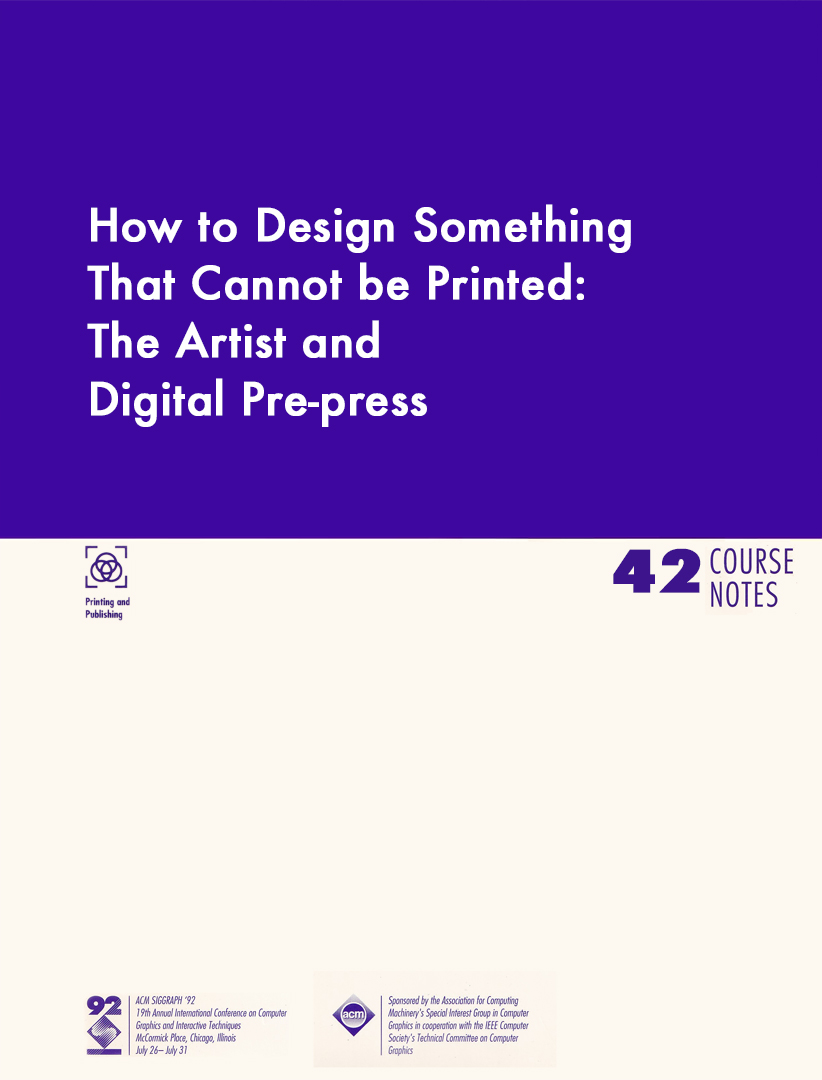“How to Design Something That Cannot be Printed: The Artist and Digital Pre-press” by Romano
Conference:
Type(s):
Entry Number: 42
Title:
- How to Design Something That Cannot be Printed: The Artist and Digital Pre-press
Course Organizer(s):
Presenter(s)/Author(s):
Abstract:
Intermediate
Some experience in either art and design or printing and publishing.
Who Should Attend
Artists, graphic designers, and digital or traditional pre-press professionals.
Objectives
To provide attendees with a coherent understanding of the changes in the creative and production processes taking place as a result of new electronic tools. Attendees learn how to design something that can be printed. Art and production professionals learn how to categorize available draw, paint, page-layout, and related programs, as well as hardware systems, by price/performance levels.
Description
As art becomes electronic it must link and calibrate to the final reproduction media. This session examines the technical issues and evolving relationship between graphic designers and printers. Digital designs reproduced on paper in large quantities are limited by print press variables, such as water and ink, platemaking, resolution, and ink impurity. Designers are hampered by trapping, color consistency, fonts, and graphic handling.
The digital pre-press process converts an image into the form needed for printing. If this process is not understood, it is easy to design something that cannot be printed.
Contents/Schedule PDF:
Contributed By:
- Mary Whitton
Location:
- Charles Babbage Institute Archives, University of Minnesota




